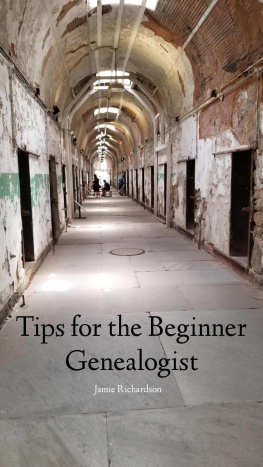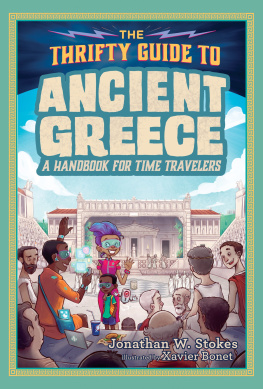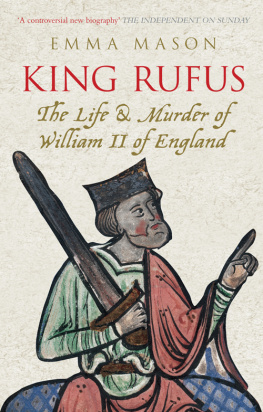Transcribers Note
The photographs and maps been repositioned, where necessary, to fall at a paragraph or chapter break.
Larger versions of the two maps can be viewed using the link provided below the image.
Please see the transcribers at the end of this text for a more complete account of any other textual issues and their resolution.
BRONZE CHARIOTEER FOUND AT DELPHI
VACATION DAYS
IN GREECE
BY
RUFUS B. RICHARDSON
FORMERLY DIRECTOR OF THE AMERICAN SCHOOL OF
ARCHOLOGY, ATHENS
ILLUSTRATED
NEW YORK
CHARLES SCRIBNERS SONS
1903
Copyright, 1903, by CHARLES SCRIBNERS SONS
Published, September, 1903
TROW DIRECTORY PRINTING AND BOOKBINDING COMPANY NEW YORK
To
MY SON
THE COMPANION OF
MY TRAVELS
PREFACE
During a residence of eleven years in Greece I have formed the habit of writing to certain periodicals descriptions of my journeys. The occasion for making a book out of these articles was the suggestion on the part of many members of the American School of Classical Studies, at Athens, who had shared these journeys with me, that I should do so, and so make the descriptions accessible to them. I yielded to this suggestion all the more readily from the consideration that my wanderings have taken me into many nooks and corners not usually visited by those whose stay in the country is short.
Having seen the sunrise from most of the mountain-tops of the country, having forded many of its rivers, and having caught the indescribable color at early dawn and at evening twilight, from the deck of coasting steamers, all along these fascinating shores, I felt it only right that I should try to convey to others, less fortunate than myself, some picture, however inadequate, of all this experience and enjoyment. All that is here set down is, however, but a part of a larger picture that is ever present in my memory.
For the most part I have avoided what has been most frequently described. Athens, Olympia, and the much-visited Argive plain, I have not touched upon, because I did not wish to swell the book by telling thrice-told tales. I tell of what I have most enjoyed, in the hope that readers may feel with me the charm of this poets land, which has, more than any other, infinite riches in a little room.
The slight alterations that I have made in the original form of the descriptions was made with the design of bringing them, in a measure, up to the present time. I have also arranged them on a geographical thread, running from the Ionian Islands, through Northern Greece to the Peloponnesus. The two larger articles, on Sicily and Dalmatia, are not simply tacked on. They belong to the subject, inasmuch as Sicily was an important part of Hellas, as the Greeks called their country, and inasmuch as Greek colonies once skirted the greater part of the coast of Dalmatia.
In regard to the spelling of proper names, I have tried to shun unusual appearances. But I have great objection to changing all the Greek endings in os into us, just because the Romans did so. I also object to changing the Greek k into c where it will surely be pronounced as an s. In the case of names that have become a part of our English speech, I have, however, admitted these changes. The result may not seem satisfactory, on account of the lack of a rigid system; but I trust that it will be pardoned.
CONTENTS
| PAGE |
| Corfu |
| A Day in Ithaca |
| Delphi, The Sanctuary of Greece |
| Dodona |
| The Bicycle in Greece |
| Acarnania |
| tolia |
| Thermopyl |
| Thessaly |
| An Ascent of the Highest Mountain in Greece |
| A Journey from Athens to Eretria |
| Taygetos and Kithron |
| Styx and Stymphalus |
| An Unusual Approach to Epidauros |
| Messene and Sandy Pylos |
| A Tour in Sicily |
| Dalmatia |
ILLUSTRATIONS
| Bronze Charioteer Found at Delphi |
| FACING PAGE |
| Corfu. Mouth of the Old Harbor with Ship of Ulysses |
| Ithaca. Polis Bay from the North |
| Temple at Stratos |
| Thermon. Temple of Apollo in the Foreground |
| Thermopyl. From the West |
| Meteora Monasteries |
| Sparta, with Taygetos in the Background |
| The Stygian Pool |
| Theatre at Epidauros |
| Bay of Navarino, with Old Pylos to the Right and Sphakteria to the Left |
| Stone Quarry at Syracuse Called Latomia dei Cappucini |
| So-called Concordia Temple at Girgenti |
| Cattaro |
| Spalato. Palace of Diocletian. South Front |
| Clissa |
| Map of Sicily and Dalmatia |
| Map of Greece |
CORFU
It is great good fortune to spend a week in Corfu on the way to Greece. Seeing it from one end to the other, wandering through its olive forests and vineyards, brings on a mild, or, in some cases, a wild, intoxication without wine. What words fit the surrounding beauty but Islands of the Blessed, Elysium, Garden of Eden, "Paradise"? It is not Heaven, after all, for one sees here the poor, lame, blind, begging for small alms; but, as long as earth holds such corners as Corfu, it is not all cursed.
To the traveller who has felt the intoxication of such a region, and is impelled to report something of it, the impotence of words comes home with special force. Naught but the painters art seems adequate to report Corfu. And, furthermore, painter as well as poet might here well feel the weakness of his art. It is a great boon to have had this realm of beauty brought upon the retina of the eye, and so communicated to the soul.
One may, perhaps, be allowed to group the impressions that Corfu makes, and report them with a plainness that aspires only to the office of a photograph, resigning the attempt at coloring.
Before the eye lies one Corfuthe Corfu of to-day; but before the mind are brought two othersthe Kerkyra of Greek history and the Scheria of Homer. The two latter compete with the former, and refuse the present beautiful scene a monopoly of attention.
But, first, to be just to the present Corfu. The traveller who has never been east of Italy, which was my case at the time of my first visit in 1890, feels that he is here passing for the first time the bounds between Europe and the Orient. The streets and squares of the city, which contains a population of about 30,000about one-third of the population of the whole islandswarm with figures clad in the most wonderful costumes, men and women vying with one another in display of colors. The Corfiotes themselves contribute largely to this display of costumes. From across the narrow strait come from Epirus many Albanians, with their big white skirts and their kingly air, some for trade and a quick return, and some for a longer stay. From the same quarter come the no less picturesque people, partly Greek and partly Wallachianbut who can give the component parts of the blood of these people of Epirus?who, having attempted to secure the consummation of what the Congress of Berlin decreed, incorporation with Greece, were treated as Turks usually treat insurgents, and were then living as refugees in Corfu, awaiting the hour when Moslem rule shall recede from the shores of Europe. Some of these mens costumes are ragged and dirty, but with what an air the men walk in them. It is not a swagger, but a kings gait. A well-dressed European gentleman can as little compete with these men for attention as the Berlin palace can compete with the picturesque ruins of Heidelberg. The clergy, who seem numerous enough here to preach the Gospel to every creature, with their long black gowns and high stiff caps, make quite a feature in the throng. The military officers are also numerous and brilliantly dressed, but are too much like ordinary Europeans to attract particular notice.













